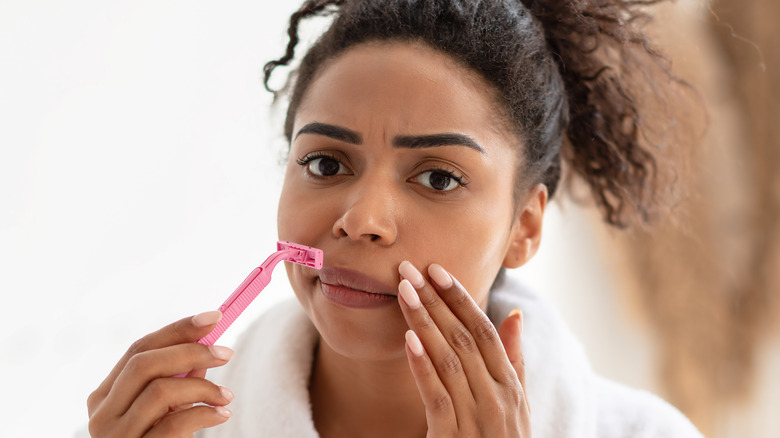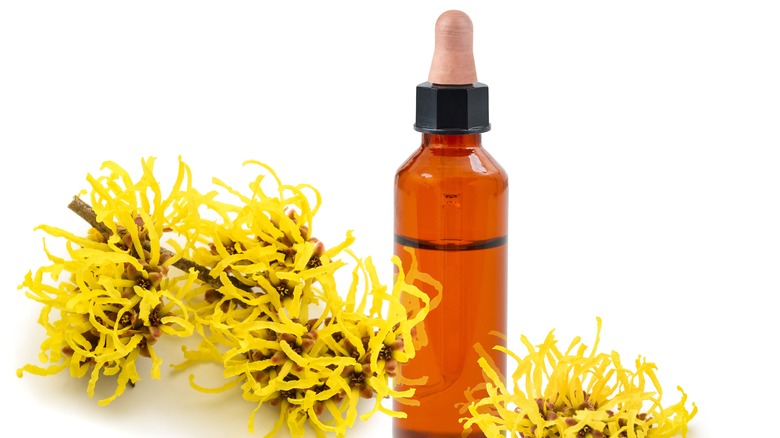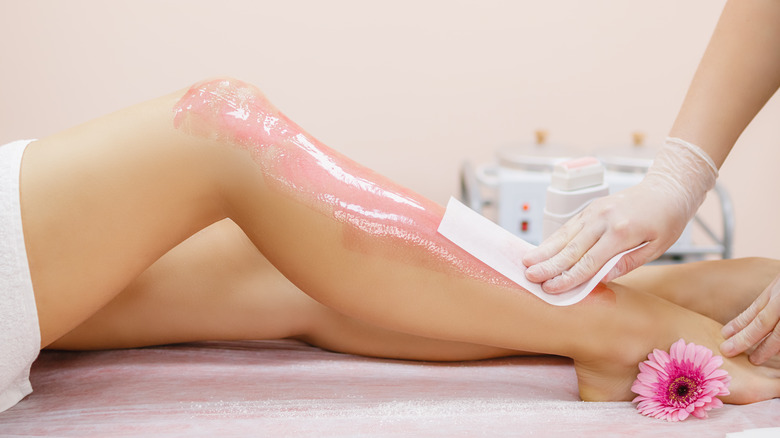How To Make Razor Bumps A Thing Of The Past
If you shave, you may have experienced at least one flare-up of razor burn. Although it can burn and itch, it's still a step below razor bumps, which combine these symptoms with red, raised, pimple-like bumps. Razor burn can fade fast with the help of some soothing avocado oil or aloe vera. But razor bumps are something different: they occur from ingrown hair, specifically when hair gets stuck in a follicle instead of doing what it should: grow out of the follicle (via Healthline).
Worse, razor bumps may hang around for a while, usually about three or four weeks (via Healthline). Since razor bumps are peskier than razor burn, they require a different, more consistent treatment approach. You want to feel better, quickly, and you also want the bumps to go away — and the sooner, the better. Like many other conditions, the best way to make razor bumps a thing of the past is to ensure they don't make an encore appearance; you want to do everything you can to prevent them. You can rise to the challenge of both tasks — treating razor bumps and preventing them — with a first-things-first plan of attack.
Soothe the discomfort and dry up the bumps
Razor bumps are most likely to occur on the face, legs, underarms, and groin area — in other words, the places where people typically shave (via Healthline). Applying a washcloth drenched in cool water to razor bumps should literally cool them down. If it doesn't, try a topical treatment, such as aloe vera, coconut oil, tea tree oil, or witch hazel. It contains tannins that soothe the skin (via Buckhead Dermatology).
Once you've addressed the immediate discomfort, one of two topical treatments can cause razor bumps to recede, Medical News Today says. The first is salicylic acid, which draws oil from the pores and removes dead skin cells. The second is glycolic acid, which "chemically exfoliates the skin" (via Medical News Today). These ingredients come in multiple forms: cleansers, peels, serums, and toners. The products that you leave on the skin for a specified amount of time often produce the best results.
The products are safe, but proceeding cautiously before using them is wise, especially if you have a pre-existing skin condition. This means getting the all-clear from your physician or dermatologist and testing the product on a small area of your skin — and with a small amount of acid. Otherwise, follow up by moisturizing your skin, using a product that is clearly marked "alcohol-free." A moisturizer with aloe vera or shea butter can provide instant relief and soften your skin at the same time.
Move to prevention mode
Learning how to treat razor bumps can be gratifying, but it also requires patience. The bumps may hang around for a while. And this is when the "plates" start spinning; you want to continue seeing progress while preventing another outbreak. So, expect to multitask for a while. Undeniably, the best way to keep razor bumps at bay is to stop shaving entirely (via Medical News Today). For people who prefer a clean-shaven look, though, this isn't always plausible. You may even be unwilling to reduce the number of times per week that you shave. If you aren't ready to hang up your razor, you'll have to make some changes to your shaving tactics. For example, Healthline recommends that you use shaving cream, replace your razor or blade frequently, consider using an electric razor, or make an effort to shave in the same direction that your hair grows.
With some repetition, even one of these tactics may become second nature to you — your new normal. Or you may wish to go one step further by considering an alternative hair removal method (via the American Academy of Dermatology). The methods are worth investigating and include depilatories (creams that remove hair), electrolysis, laser hair removal, threading, and waxing. Razor bumps are a nuisance, but they could lead you to a superior hair removal method. Then they truly will be a thing of your past — while putting you on the cusp of a new beginning.


